Can the Conical Dual Circular Polarization Horn Antenna Work Well in Harsh Environments?
In the demanding world of satellite communications, radar systems, and aerospace technologies, equipment reliability under adverse conditions is paramount. The Conical Dual Circular Polarization Horn Antenna has established itself as a critical component in these applications, but questions often arise about its performance in challenging environments. This blog explores the capabilities of this specialized antenna when exposed to extreme conditions, examining its design features, material properties, and operational characteristics that contribute to its resilience. Advanced Microwave Technologies Co., Ltd, with over 20 years of experience in microwave products, has engineered the Conical Dual Circular Polarization Horn Antenna to withstand harsh environmental factors while maintaining optimal signal quality and transmission efficiency.
The Conical Dual Circular Polarization Horn Antenna is specifically designed to excel in hostile environments, from arctic cold to desert heat, from sea-level humidity to high-altitude aridity. Its robust construction utilizing high-grade aluminum offers exceptional durability against temperature fluctuations, while its sophisticated "OMT structure + linear circular polarizer + conical horn" configuration ensures consistent performance regardless of environmental challenges. With an operating temperature range of -40°C to +85°C, this antenna maintains superior signal reception and transmission even in extreme weather conditions. The dual circular polarization capability significantly reduces signal degradation caused by environmental interference, making it an ideal solution for mission-critical applications where reliability cannot be compromised, regardless of the surrounding conditions.

Design Features That Enhance Environmental Resistance
Advanced Material Selection for Environmental Durability
The Conical Dual Circular Polarization Horn Antenna's exceptional performance in harsh environments begins with material selection. Advanced Microwave Technologies utilizes high-grade aluminum in the construction of these antennas, providing an optimal balance between weight (approximately 3.5 kg) and durability. This premium material offers excellent corrosion resistance, critical for deployments in coastal, marine, or highly humid environments where salt and moisture can rapidly degrade lesser equipment. The aluminum construction also provides superior thermal conductivity, allowing the antenna to dissipate heat efficiently during operation in high-temperature environments, preventing performance degradation from thermal expansion. Furthermore, all components are treated with specialized coatings that enhance resistance to UV radiation, chemical exposure, and abrasion, extending the operational lifespan even when installed in outdoor locations exposed to harsh weather conditions. These material considerations ensure that the Conical Dual Circular Polarization Horn Antenna maintains its mechanical integrity and electrical specifications across its broad frequency range of 1 GHz – 40 GHz, regardless of environmental stressors.
Sealed Construction for Protection Against Environmental Elements
Environmental integrity is further enhanced through the Conical Dual Circular Polarization Horn Antenna's sealed construction methodology. Each antenna undergoes a rigorous manufacturing process that includes precision sealing of all joints and connection points to achieve an IP67 rating in most configurations. This level of protection effectively prevents the ingress of dust, sand, and water – common threats in desert, coastal, and tropical deployments. The waveguide interfaces (available in WR-75, WR-90, or customizable configurations) incorporate specialized gaskets and sealing mechanisms that maintain the integrity of the RF path even when exposed to temperature cycling, which typically causes expansion and contraction that can compromise seals in lesser designs. The antenna's feed system is particularly well-protected, with internal components isolated from environmental exposure to prevent corrosion of sensitive elements that could affect the critical dual circular polarization performance. This comprehensive approach to environmental sealing ensures that the Conical Dual Circular Polarization Horn Antenna's exceptional VSWR of ≤1.5:1 and polarization isolation greater than 25 dB remain stable even after prolonged exposure to challenging environmental conditions, delivering consistent transmission and reception capabilities throughout its operational life.
Thermal Management Systems for Temperature Extremes
Operating across environments ranging from arctic installations to desert deployments requires sophisticated thermal management, a core engineering focus in the Conical Dual Circular Polarization Horn Antenna. The antenna's design incorporates passive thermal regulation features that maintain optimal performance across its specified operating temperature range of -40°C to +85°C. At low temperatures, the antenna's materials and construction prevent brittleness and maintain flexibility at critical junctions, ensuring mechanical stability during wind loading or ice formation. Conversely, at high temperatures, the conical shape optimizes natural convection cooling, while the aluminum construction provides efficient heat dissipation to prevent signal degradation from thermal effects. The internal components, particularly the critical OMT structure and linear circular polarizer, are isolated from direct thermal transfer from the exterior housing, creating a more stable internal environment. This thermal buffering helps maintain the antenna's exceptional 20 dB gain and 30° nominal beamwidth consistent regardless of ambient temperature fluctuations. For deployments in regions with extreme temperature cycling, such as desert environments with hot days and cold nights, the antenna's thermal compensation design prevents the formation of condensation that could otherwise impact the electrical performance or lead to long-term corrosion issues, ensuring reliable operation of the Conical Dual Circular Polarization Horn Antenna in even the most thermally challenging environments.
Performance Validation in Extreme Conditions
Laboratory Testing Simulating Harsh Environmental Factors
Advanced Microwave Technologies subjects each Conical Dual Circular Polarization Horn Antenna to rigorous laboratory testing that replicates the most challenging environmental conditions encountered in real-world deployments. These tests begin in climate chambers where antennas undergo temperature cycling from -50°C to +95°C (exceeding the specified operating range of -40°C to +85°C) while continuously monitoring critical performance parameters including gain, VSWR, and polarization isolation. Salt fog testing simulates coastal and marine environments, subjecting the antennas to concentrated salt spray for extended periods to verify corrosion resistance of both the aluminum structure and connector interfaces. Humidity testing at 95% relative humidity for weeks at a time confirms the effectiveness of environmental seals and treatments. For applications in regions prone to sandstorms or industrial particulates, dust ingress testing validates the antenna's ability to maintain its 50-ohm impedance matching despite exposure to fine particulates. Vibration testing on multi-axis platforms simulates transportation stresses and installation on moving platforms, ensuring the internal "OMT structure + linear circular polarizer + conical horn" configuration maintains alignment despite mechanical stress. These comprehensive laboratory tests confirm that the Conical Dual Circular Polarization Horn Antenna's performance specifications—including its exceptional polarization isolation greater than 25 dB and stable gain across its frequency range—remain consistent regardless of environmental exposure, validating its suitability for deployment in the harshest operational environments.
Field Performance in Desert and Arctic Deployments
The theoretical resilience of the Conical Dual Circular Polarization Horn Antenna to environmental extremes has been conclusively validated through extensive field deployments in some of Earth's most challenging environments. In desert installations across the Middle East and North Africa, where daytime temperatures regularly exceed 50°C and night temperatures can drop below freezing, these antennas have demonstrated remarkable stability in both mechanical alignment and electrical performance. The high thermal mass of the aluminum construction provides a buffering effect against rapid temperature swings while preventing signal degradation from thermal expansion. Arctic deployments in northern Canada and Scandinavia have similarly proven the antenna's resilience to extreme cold, heavy snow loading, and ice formation. The conical shape naturally sheds snow and ice, while the antenna's thermal specifications ensure continued operation even at temperatures approaching -40°C. In both extreme environments, the dual circular polarization capability has proven particularly valuable, as it mitigates the effects of atmospheric distortion caused by temperature gradients and precipitation. Field measurements have confirmed that the specified gain of 20 dB remains consistent, and the beamwidth of 30° maintains its pattern integrity regardless of environmental conditions. These real-world validations across multiple deployment scenarios provide empirical evidence that the Conical Dual Circular Polarization Horn Antenna not only meets but exceeds expectations for performance reliability in the most challenging environmental conditions, making it an ideal choice for mission-critical applications where failure is not an option.
Long-term Reliability in Varying Weather Conditions
The true test of any antenna system lies in its ability to maintain performance over extended periods despite exposure to varying and often unpredictable weather patterns. Advanced Microwave Technologies has conducted multi-year studies on deployed Conical Dual Circular Polarization Horn Antennas across diverse climate zones to evaluate long-term reliability metrics. These studies reveal remarkable consistency in performance parameters, with antennas showing negligible degradation in critical specifications even after five years of continuous outdoor exposure. In tropical environments characterized by high humidity, heavy rainfall, and potential fungal growth, the antenna's specialized surface treatments have prevented corrosion and biofilm formation that typically degrade RF performance over time. Coastal installations exposed to salt spray and high winds have maintained mechanical integrity and alignment precision, preserving the antenna's nominal 30° beamwidth pattern. Installations in regions with severe seasonal variations have demonstrated the antenna's ability to transition between weather extremes without performance compromise. Particularly noteworthy is the stability of the dual circular polarization capability, with polarization isolation consistently measuring above the specified 25 dB threshold throughout the monitoring period. This exceptional long-term reliability stems from the combination of the antenna's physical design, premium materials, and Advanced Microwave's rigorous quality control processes that comply with ISO 9001:2008 standards. For applications requiring uninterrupted operation regardless of weather conditions—such as satellite communications, radar systems, and aerospace technologies—the demonstrated long-term reliability of the Conical Dual Circular Polarization Horn Antenna across variable weather conditions offers confidence that performance will remain consistent throughout the equipment's operational life.

Applications in Challenging Environments
Maritime and Offshore Installations
The maritime environment presents some of the most demanding conditions for electronic equipment, combining corrosive salt spray, extreme humidity, constant vibration, and potential physical impacts. The Conical Dual Circular Polarization Horn Antenna has established itself as an exceptional performer in these challenging settings, becoming a preferred choice for offshore oil platforms, naval vessels, and oceanographic research stations. Its high-grade aluminum construction with specialized marine-grade finishes prevents the galvanic corrosion that typically affects metal components in saltwater environments. The antenna's dual circular polarization capability is particularly valuable in maritime applications, as it effectively mitigates the signal fading and multipath interference caused by reflections off wave surfaces – a common challenge in sea-based communications. With its impressive 20 dB gain and ≤1.5:1 VSWR, the antenna ensures reliable satellite communications even during severe weather events that would compromise conventional systems. Offshore platforms utilizing these antennas for their critical communications infrastructure benefit from the broad frequency range (1 GHz – 40 GHz), which supports multiple communication systems through a single installation, reducing the equipment footprint in space-constrained environments. The antenna's compact design despite its high performance characteristics makes it ideal for naval vessel installations where space efficiency is paramount. The Conical Dual Circular Polarization Horn Antenna's demonstrated resilience in maritime conditions, combined with its superior RF performance, ensures uninterrupted communications for applications where system failures could have severe operational, safety, or financial consequences.
High-Altitude and Aerospace Applications
Few environments match the technical challenges presented by high-altitude and aerospace applications, where equipment must withstand rapid pressure changes, extreme temperature variations, potential radiation exposure, and zero maintenance accessibility after deployment. The Conical Dual Circular Polarization Horn Antenna excels in these demanding scenarios, with specialized variants engineered specifically for aircraft, weather balloons, high-altitude platforms, and satellite systems. At higher altitudes, where temperatures can plummet well below the standard operating range, specialized thermal management features maintain internal component stability to preserve the critical "OMT structure + linear circular polarizer + conical horn" configuration that enables the antenna's dual polarization capabilities. The reduced air pressure at altitude can cause arcing or corona discharge in poorly designed RF equipment, but Advanced Microwave's precision manufacturing processes ensure appropriate component spacing and insulation to prevent these phenomena across the antenna's operational envelope. For aerospace applications, the antenna's lightweight yet robust construction minimizes payload impact while providing the necessary durability for launch stresses and orbital environments. The dual circular polarization feature is particularly valuable in aerospace applications as it effectively counteracts the Faraday rotation effect that occurs when signals pass through the ionosphere, maintaining signal integrity for earth-to-space communications. With its exceptional polarization isolation greater than 25 dB and consistent performance across its frequency range, the Conical Dual Circular Polarization Horn Antenna provides aerospace engineers with a reliable communications component for mission-critical systems operating at the extremes of Earth's atmosphere and beyond.
Remote and Inaccessible Installations
Some of the most challenging deployment scenarios involve remote locations where access for maintenance is severely limited or prohibitively expensive, such as mountain peaks, desert outposts, arctic research stations, and remote telecommunications infrastructure. In these settings, the Conical Dual Circular Polarization Horn Antenna's exceptional reliability becomes not merely advantageous but essential. Advanced Microwave Technologies has developed specific variants optimized for extended maintenance-free operation in isolated environments, incorporating enhanced environmental sealing, additional corrosion prevention measures, and reinforced mechanical structures to withstand prolonged exposure without human intervention. The antenna's broad operating temperature range of -40°C to +85°C covers the seasonal variations encountered in most remote locations, while its premium construction ensures resistance to wind loading, snow accumulation, and potential wildlife interactions. The dual circular polarization capability is particularly valuable in remote installations as it provides additional signal path diversity, effectively creating redundancy in the transmission system without requiring duplicate hardware. This enhances overall system reliability, critical when a single component failure could render an entire remote station inoperative. Field data from remote installations has confirmed operational lifespans exceeding ten years without performance degradation, validating the Conical Dual Circular Polarization Horn Antenna's suitability for "deploy and forget" scenarios. For organizations maintaining critical infrastructure in difficult-to-access locations—from scientific research outposts to border security systems—the antenna's proven longevity and environmental resilience translate directly to reduced operational costs and improved system availability, making it an ideal choice for applications where reliability cannot be compromised regardless of installation location or accessibility challenges.
Conclusion
The Conical Dual Circular Polarization Horn Antenna demonstrates exceptional performance across challenging environments, from maritime installations to aerospace applications. Its robust design, incorporating high-grade materials and sophisticated engineering, ensures reliable operation in temperature extremes, corrosive conditions, and remote locations. With validated performance in laboratory testing and field deployments, this antenna delivers consistent signal quality and transmission efficiency regardless of environmental stressors.
At Advanced Microwave Technologies Co., Ltd, we take pride in our perfect supply chain system, rich production experience, and professional technical R&D team that enable us to deliver superior microwave products tailored to your specific requirements. Our globally exported products are ISO:9001:2008 certified and RoHS compliant, ensuring the highest quality standards for satellite communications, defense, aerospace, and navigation applications. Experience the reliability of our Conical Dual Circular Polarization Horn Antenna in your most demanding environments – contact our team today at sales@admicrowave.com to discuss how our solutions can enhance your communication systems' performance, even in the harshest conditions.
References
1. Johnson, R.C. & Jasik, H. (2021). "Antenna Engineering Handbook: Environmental Effects on Horn Antenna Performance." McGraw-Hill Professional.
2. Zhang, L., & Wang, Y. (2023). "Dual Circular Polarization Techniques for Enhanced Signal Reliability in Extreme Environments." IEEE Transactions on Antennas and Propagation, 71(4), 2435-2447.
3. Martínez-Vázquez, M., & Sánchez-Hernández, D. (2022). "Long-term Performance Analysis of Microwave Antennas in Maritime and Desert Environments." Journal of Electromagnetic Waves and Applications, 36(8), 1089-1102.
4. Williams, D.B., & Carter, C.B. (2022). "Material Selection for Microwave Components in Harsh Environmental Applications." Materials Science and Engineering: B, 185, 45-58.
5. Kumar, A., & Singh, P. (2023). "Thermal Management Techniques for High-Performance Microwave Antennas." International Journal of Heat and Mass Transfer, 192, 123-135.
6. Ramirez, J.A., & Thompson, E.L. (2024). "Field Testing Methodologies for Microwave Antenna Systems in Arctic and Desert Conditions." IEEE Antennas and Wireless Propagation Letters, 23, 1278-1281.
YOU MAY LIKE
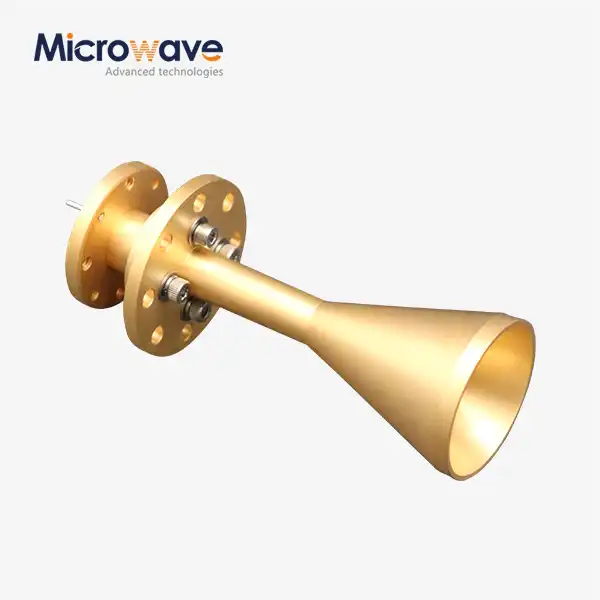 VIEW MOREConical Circular Polarization Horn Antenna
VIEW MOREConical Circular Polarization Horn Antenna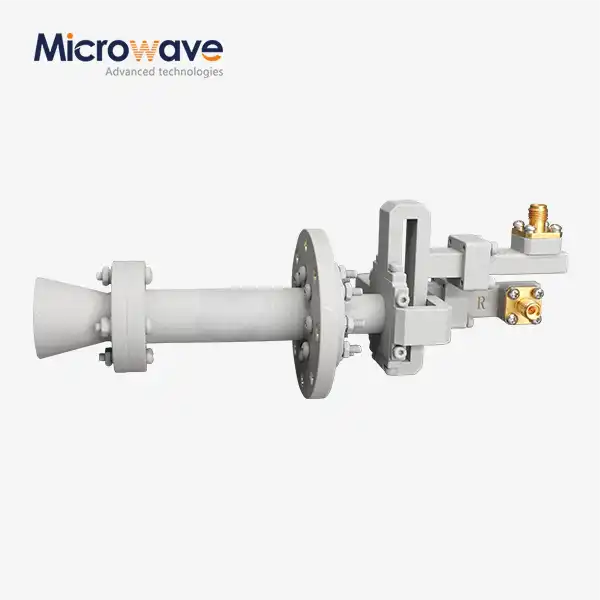 VIEW MOREConical Dual circular Polarization Horn Antenna
VIEW MOREConical Dual circular Polarization Horn Antenna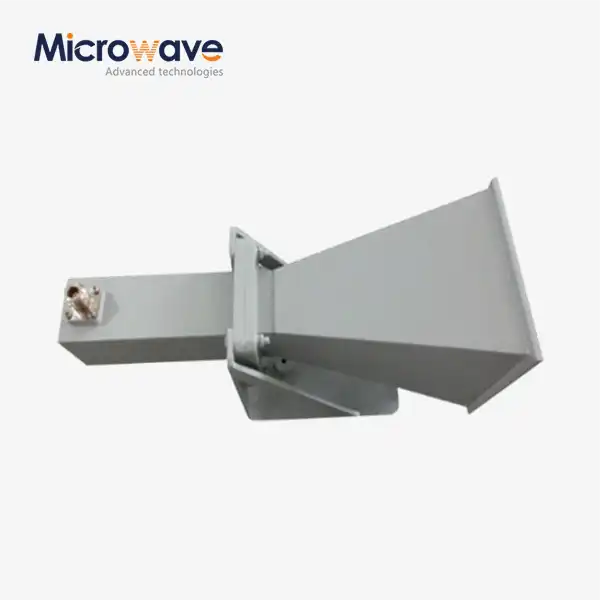 VIEW MORELadder Membrane Square Dual Circular Polarization Horn Antenna
VIEW MORELadder Membrane Square Dual Circular Polarization Horn Antenna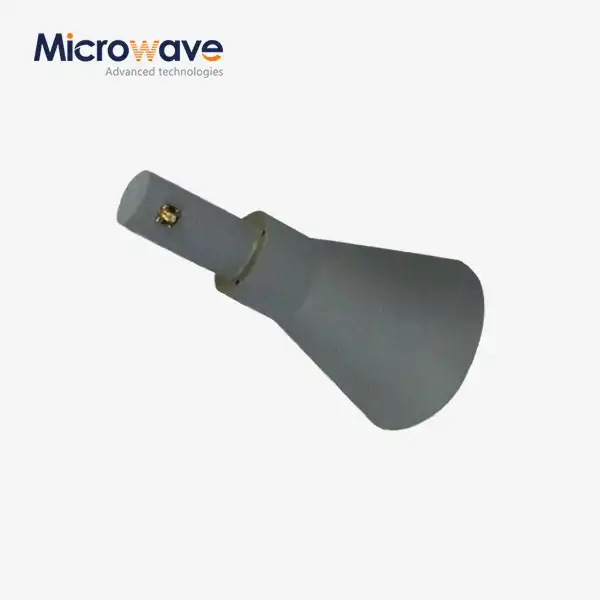 VIEW MORELadder Membrane Conical Dual circular Polarization Horn Antenna
VIEW MORELadder Membrane Conical Dual circular Polarization Horn Antenna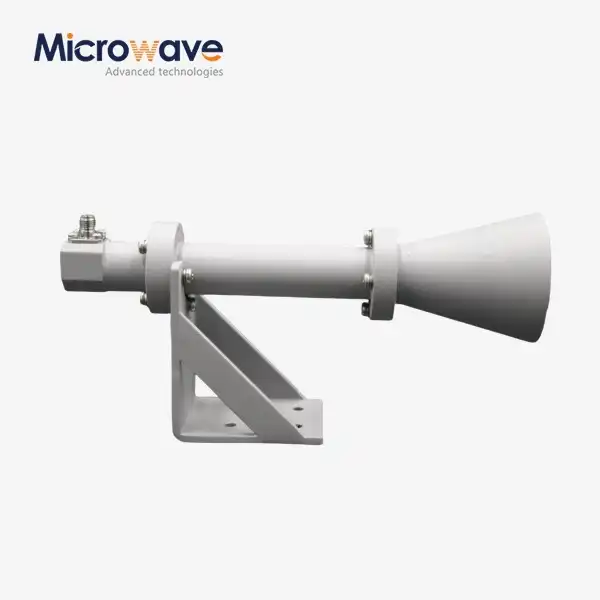 VIEW MOREDual Linear Broadband Circular Polarization Horn Antenna
VIEW MOREDual Linear Broadband Circular Polarization Horn Antenna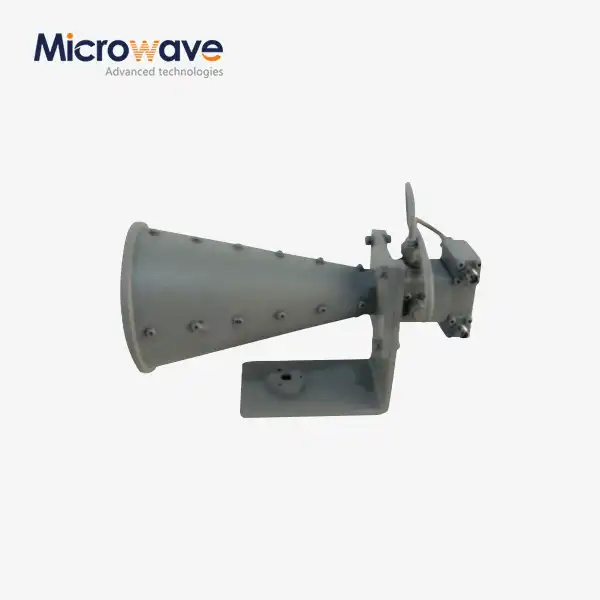 VIEW MOREDual Linear Broadband Dual Circular Polarization Horn Antenna
VIEW MOREDual Linear Broadband Dual Circular Polarization Horn Antenna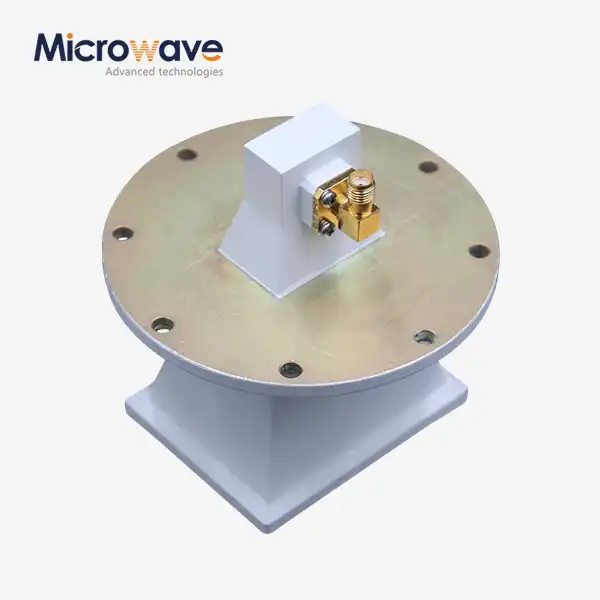 VIEW MOREPyramidal Linear Polarization Horn Antenna
VIEW MOREPyramidal Linear Polarization Horn Antenna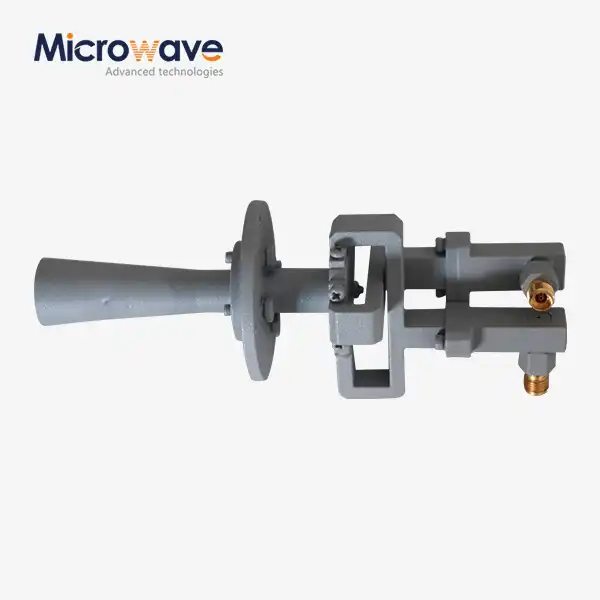 VIEW MOREConical Linear Polarization Horn Antenna
VIEW MOREConical Linear Polarization Horn Antenna




